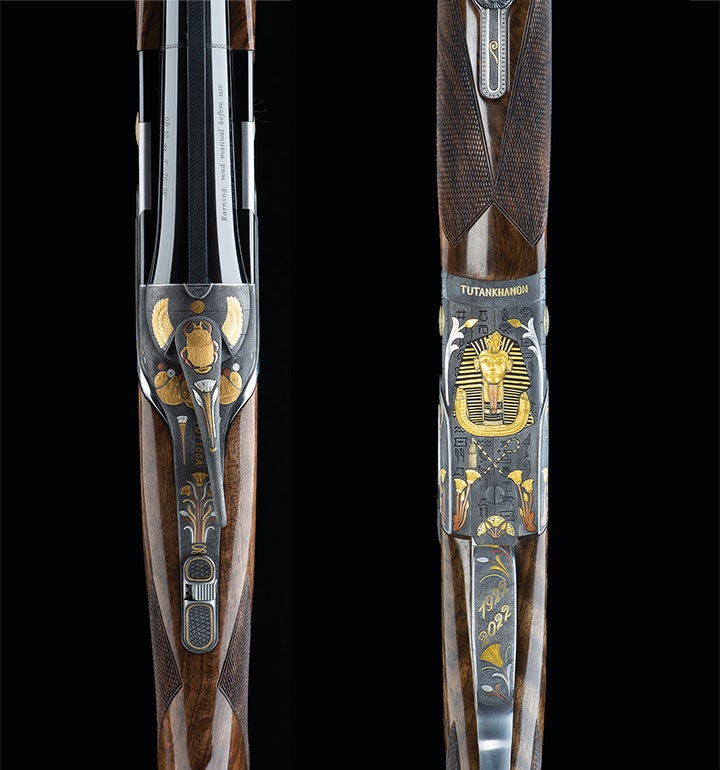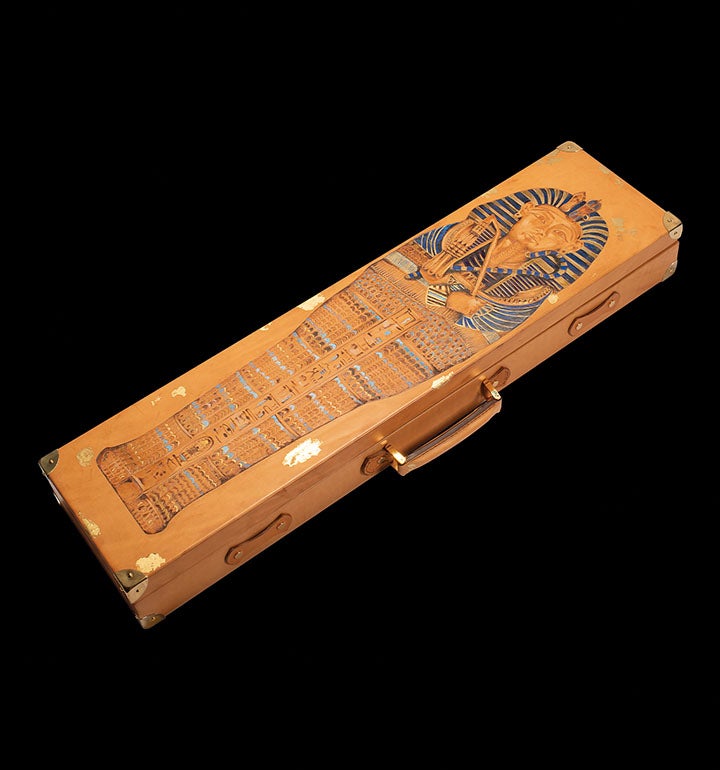The seals of a dynasty
The top and the bottom of the receiver are all reminiscent of Tutankhamon's tomb and its discovery.
The top with the gold-inlaid winged beetle displays the cartouche on the door of King Tut's tomb and Tutankhamon's prenomen or throne name.
The bottom portrays King Tut's golden death mask. The crook and flail were insignia of pharaonic authority in ancient Egyptian society. The shepherd's crook stood for kingship and the flail for the fertility of the land.







